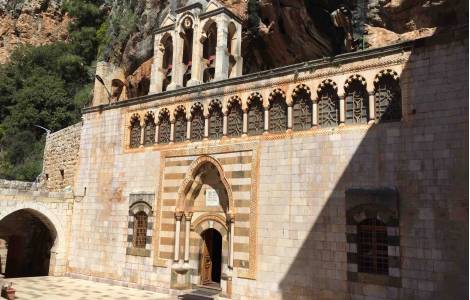Diman – The “Holy Valley” of Qadisha represents a living heritage of spirituality and faith not only for Lebanese Christians but for Christians all over the world. For this reason the Lebanese political authorities and also the international organizations such as UNESCO are called to guard and promote this precious treasure in the Lebanese mountains, also helping to make the rocky sanctuaries scattered there more accessible to pilgrims and tourists from all over the world. The request was expressed by Maronite Patriarch Bechara Boutros Rai, in the speech with which yesterday, Wednesday 18 September, he opened the Forum on the legacy of the Holy Valley, promoted in Diman by the Qannūbīn Association. During the inaugural session of the Conference, which was attended by several Patriarchs and Church leaders present in Lebanon, he underlined the ecumenical value of the initiative. During the conference proceedings, scholars of history, art and archeology in their reports will highlight the richness of the treasures of art and spirituality preserved in the Valley, also outlining projects to promote that territory in a suitable and “sustainable” way, also from a touristic point of view.
The Valley of Qadisha, in Lebanon, is a deep gorge created by the river with the same name. The most spectacular part of the gorge stretches for about 20 km between the villages of Tourza and Bsharreh, the birthplace of the Lebanese poet Khalil Gibran.
The valley is famous for hosting, in addition to the remaining cedar forests of Lebanon, also numerous Christian monastic settlements among the most important in the Middle East. Already in the tenth century, groups of Maronite Christians from the Oronte valley, in the Syrian hinterland, had found refuge in the valley to escape the hostility of the Byzantines.
Among the most important monasteries in the valley are those of Daīr Qannūbīn, that of Daīr Mār Anṭūniūs Qozḥayā (in the photo) and finally Daīr Mār Elīsha. The area is also scattered with hermitages, chapels and caves used in the past by monks. The same Maronite Patriarchs lived for 400 years in the monasteries of the valley during the Ottoman era. In his speech, also Mar Ignatius Aphrem II, Patriarch of Antioch of the Syrian Orthodox, expressed his hope that the historical presence of the monks of different ecclesial communities will increasingly foster fraternal collaboration among the various monastic communities, to enhance the Holy Valley as a living and vibrant place of Christian spirituality in the Middle East.
By: Agenzia Fides






